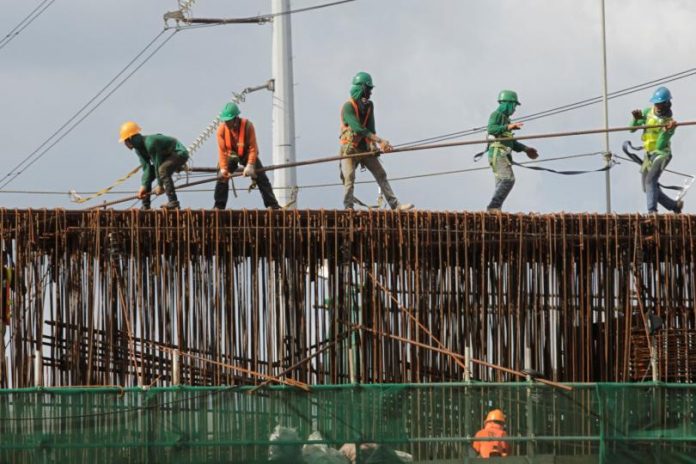
MANILA – An economist of ING Bank Manila remains optimistic that the Philippine economy will continue to expand in the second half of 2018, largely driven by robust government spending.
Citing data released by the Bureau of the Treasury (BTr) Monday, ING Bank Manila senior economist Nicholas Mapa, in a report, said non-interest expenditures rose for the third consecutive month last September.
BTr data show that expenditures last September alone reached P298.6 billion, 26 percent higher than the P237 billion same month in 2017.
Of the total, interest payments rose 24 percent year-on-year to P32.7 billion while Other expenditures jumped 26 percent year-on-year to P265.9 billion.
In end-September this, total expenditures reached P2.489 trillion, up 24 percent than the P2.014 trillion in the first nine months of 2017 and three percent higher than the P2.427 trillion programmed for the same period.
Revenues last September totaled to P202.4 billion, up one percent year-on-year while the end-September figure rose 17 percent to P2.111 trillion. The programmed revenues for the first three quarters this year is P2.030 trillion.
These figures resulted in a budget gap of P96.2 billion last September, an increase of 161 percent, as the government ups its spending, particularly on infrastructure projects.
To date, budget deficit amounts to P378.2 billion, 78 percent higher than year-ago’s P213.1 billion but lower than the P396.6 billion program.
With these developments, Mapa is optimistic that growth will remain strong despite an expected deceleration in household spending.
“Strong government spending will likely bolster growth into 2H 2018 and offset a likely slowdown in household spending due to accelerating inflation and elevated borrowing costs,” he said.
In the first half of the year, growth, as measured by gross domestic product (GPD), averaged at 6.3 percent, with the first quarter figure at 6.6 percent and the second at six percent.
The slowdown in the second quarter was traced partly to the lower contribution of the agriculture sector, which, in turn, resulted in faster rate of price increases given the lack of supply of food items like rice and vegetables due to weather-related disturbances.
Authorities, however, are optimistic that faster rise of inflation will be addressed by several measures that have been put in place following the issuance by the Malacañang of several Executive Orders (EOs) targeted to ensure the adequate supply of food items like rice and meat.
Aside from the aim to slow inflation rate, these measures are also targeted to ensure sustained strong growth of the economy, with the target for this year alone cut to 6.5-6.9 percent from the original seven to eight percent, which is also the goal until 2022.
Mapa said that for the third quarter alone, the government’s spending grew by 31.1 percent and the budget deficit, to date, accounts for 72 percent of the P523.6 billion programmed for the year.
He said that for the government to meet its P3.76 trillion spending target this year, it “will need to approach 40 percent growth on top of last year’s impressive 4Q print.”
“Given the recent resolve the government has displayed in spending these past months, our forecast for 6.0-6.5 percent growth in the 2H will rely more heavily on the national government’s ability to pump prime to offset the projected deceleration in household consumption as the twin effects of accelerating inflation and higher borrowing costs begin to bite,” he said.
The economist also noted that “on top of the current build-build-build efforts of the government, election-related expenditures are also seen to kick into high gear ahead of May 2019.”
“Given their current cash position and projected aggressive expenditure program, government will be pressured to finance the expected pump priming efforts,” he said.
“Such financing will likely employ a mix of foreign-denominated and local borrowings as the administration closes in on its expenditure target for the year,” he added.
Finance officials have disclosed plans to issue US dollar-denominated bonds, among others, in the last quarter of the year to take advantage of investors’ continued interest in the Philippine economy. (PNA)



